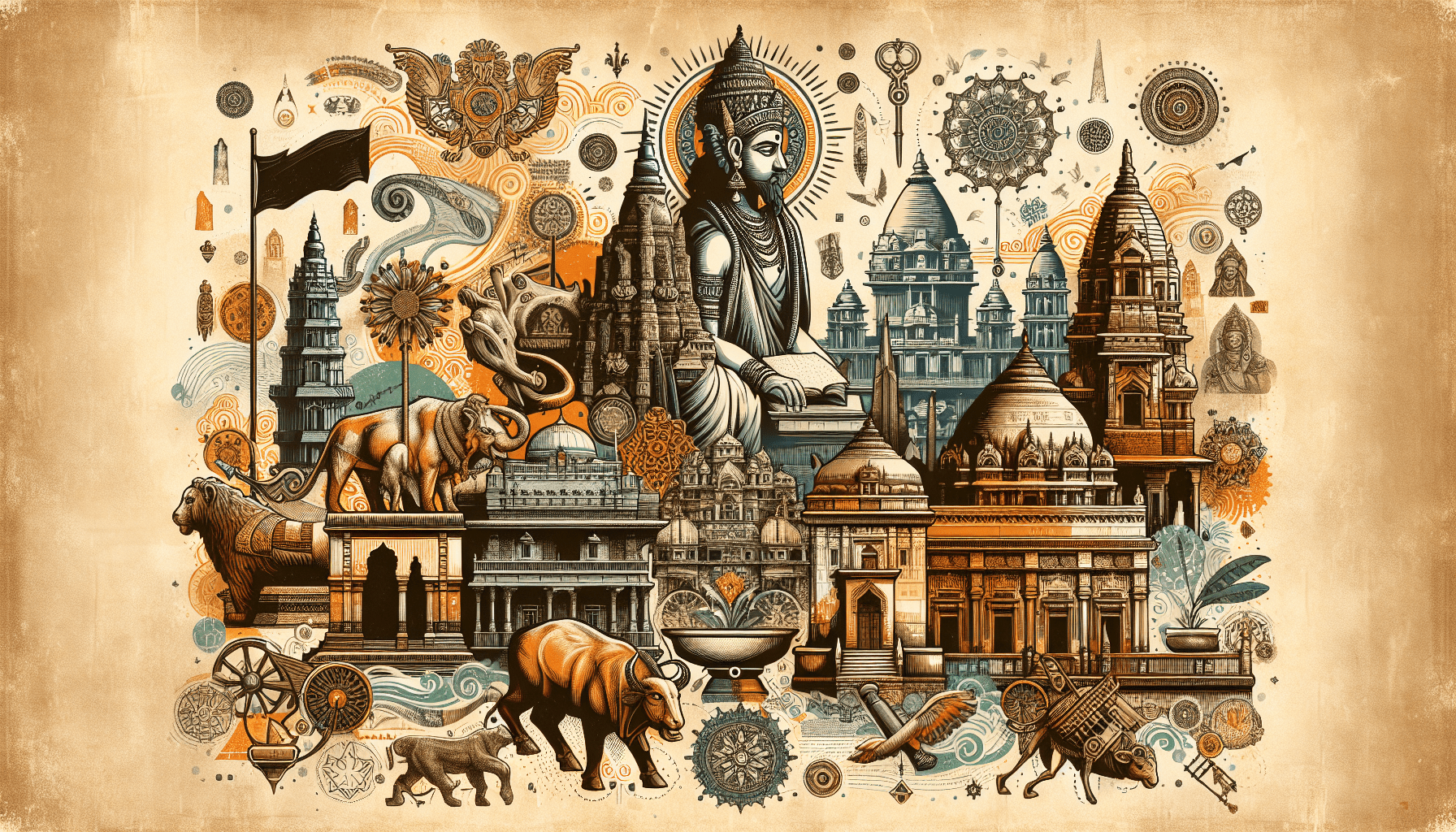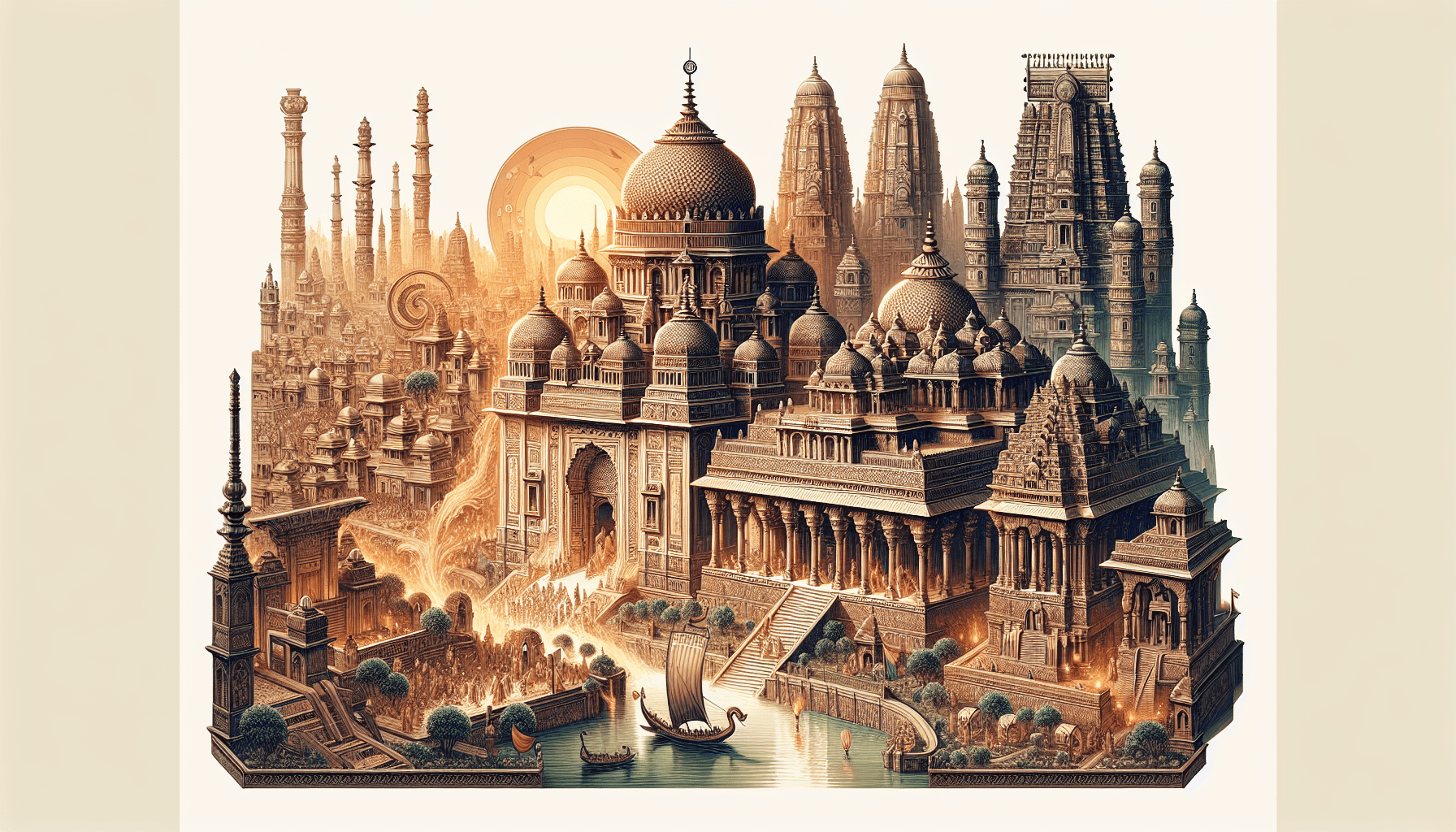In the quest to uncover the origins of Ayodhya, this article takes you on a journey to unravel the captivating history behind its creation. Discover the intriguing tale of the person responsible for laying the foundation of Ayodhya for the very first time. Embark on this fascinating exploration to unearth the secrets hidden within the ancient city’s beginnings and gain a deeper understanding of its heritage and significance.
Table of Contents
Historical background
Ayodhya, one of the oldest and holiest cities in India, holds a deep historical and religious significance. Its origins date back to ancient scriptures and Hindu mythology, making it a place of great importance in the Hindu religion.
Ancient scriptures mentioning Ayodhya
References to Ayodhya can be found in various ancient scriptures, which provide insights into the city’s early existence. The Rigveda, one of the oldest texts in Hinduism, mentions Ayodhya as a prosperous city ruled by King Sudas. The Atharvaveda also portrays Ayodhya as a divine city, emphasizing its significance in ancient times.
Importance of Ayodhya in Hindu mythology
Ayodhya holds a prominent place in Hindu mythology as the birthplace of Lord Rama, who is revered as the seventh avatar of Lord Vishnu. The epic tale of the Ramayana describes Ayodhya as the capital of King Dasharatha’s kingdom, where Lord Rama spent his childhood and later became the ruler.
Existence of Ayodhya in ancient texts
Ancient texts like the Ramayana and the Mahabharata further affirm the existence of Ayodhya. These texts provide detailed accounts of the city’s grandeur and its connection to Lord Rama. Ayodhya is described as a magnificent city known for its richness, prosperity, and advanced civilization.
Different beliefs and theories
Over the centuries, different beliefs and theories have emerged regarding the founding of Ayodhya. Various religious texts and historical accounts present different narratives about the city’s establishment.
Ramayana’s account of Ayodhya’s founding
According to the Ramayana, Ayodhya was established by King Manu, the first human being on earth and the progenitor of humanity. Manu, guided by the gods, built Ayodhya on the banks of the Sarayu River, heralding the city’s illustrious history.
Legend of Manu’s founding of Ayodhya
Another popular belief suggests that Maharishi Manu, an ancient sage, meditated on the banks of the Sarayu River and founded Ayodhya. This legend highlights Ayodhya’s spiritual significance and the sacred energy associated with the city.
Valmiki’s account of Ayodhya’s origin
In Valmiki’s Ramayana, Ayodhya is said to have been founded by King Ikshvaku, from whom Lord Rama’s dynasty descended. The city flourished under the rule of King Ikshvaku and his successors, serving as the backdrop for Lord Rama’s journey and his eventual ascension to the throne.
Buddhist and Jain views on Ayodhya’s establishment
Buddhist and Jain literature also mention Ayodhya, but with different perspectives. Buddhist texts refer to Ayodhya as “Saketa,” emphasizing its role as an important center for Buddhism. Jain texts, on the other hand, speak of Ayodhya as a significant place for the Jain community.

Lord Rama’s connection
Ayodhya’s association with Lord Rama, the revered Hindu deity, is a pivotal aspect of its history and spirituality.
Lord Rama as the ruler of Ayodhya
According to Hindu mythology and the Ramayana, Lord Rama became the ruler of Ayodhya after returning from his exile and defeating the demon king Ravana. Ayodhya, under Lord Rama’s rule, is depicted as a well-governed and prosperous city, benefiting from his just and righteous leadership.
Role of Lord Rama and his dynasty in Ayodhya’s foundation
Lord Rama’s dynasty, known as the Ikshvaku dynasty, played a significant role in the establishment and development of Ayodhya. The dynasty’s lineage brought stability, progress, and a sense of divinity to the city. Lord Rama’s descendants continued to rule Ayodhya, further solidifying its place in history.
Historical evidence
Archaeological findings and historical evidence shed light on Ayodhya’s ancient existence, corroborating its significance and validating the narratives of the past.
Archaeological excavations in Ayodhya
Several archaeological excavations have taken place in Ayodhya, unearthing remnants of ancient structures and artifacts. These excavations have yielded valuable insights into the city’s past and have provided tangible evidence of its existence over the centuries.
Discoveries supporting Ayodhya’s ancient existence
The discovery of pottery, coins, and other items belonging to different eras has further confirmed Ayodhya’s historical existence. These findings provide a glimpse into the city’s cultural and economic aspects and contribute to a better understanding of its ancient civilization.
Inscriptions and artifacts found in Ayodhya
Inscriptions found in Ayodhya provide inscriptions and manuscripts found in Ayodhya provide valuable information about the city’s religious and cultural practices throughout history. Temples, pillars, and various other architectural remains have been discovered, highlighting the rich heritage and ancient glory of Ayodhya.

Ayodhya as a sacred city
Ayodhya’s spiritual significance transcends its historical importance, making it a revered city in Hinduism.
Significance of Ayodhya in Hinduism
For Hindus, Ayodhya is considered one of the seven sacred cities in India. It is believed to be the place where various gods and goddesses, including Lord Rama, have incarnated. Ayodhya is regarded as a holy land, attracting millions of devotees from all over the world.
Pilgrimage site for devotees
Ayodhya serves as a prominent pilgrimage site for devotees seeking spiritual solace. Pilgrims visit the city to pay homage to Lord Rama, offer prayers at the numerous temples, and seek blessings for a prosperous life. The city’s serene atmosphere and connection to Hindu mythology create a deep sense of reverence and devotion among pilgrims.
Religious rituals and festivals in Ayodhya
Ayodhya is known for its vibrant and elaborate religious rituals and festivals. Devotees flock to the city during special occasions like Diwali, the festival of lights, to celebrate Lord Rama’s return to Ayodhya. The city comes alive with vibrant decorations, grand processions, and captivating performances, showcasing the unity and devotion of its inhabitants.
Controversies surrounding Ayodhya’s founding
Ayodhya has been mired in controversies and disputes, particularly related to the Babri Masjid-Ram Janmabhoomi dispute.
Babri Masjid-Ram Janmabhoomi dispute
The Babri Masjid-Ram Janmabhoomi dispute refers to a long-standing legal and religious conflict over the site in Ayodhya where the Babri Masjid once stood. Hindus claim it as the birthplace of Lord Rama and have demanded the construction of a Ram temple at the site, while Muslims have sought the restoration of the mosque.
Legal battles and court verdicts
The dispute has been the subject of numerous legal battles and court verdicts. The most notable verdict came from the Supreme Court of India in 2019, which ruled in favor of the Hindus, allowing the construction of a Ram temple on the disputed site.
Political and communal tensions
The Ayodhya dispute has led to significant political and communal tensions in India. It has been a polarizing issue with emotions running high on both sides. Efforts have been made to ease tensions and foster harmony among different communities, emphasizing the need for peaceful coexistence and mutual respect.
Research and academic perspectives
Researchers and historians have provided their perspectives on Ayodhya’s foundation, basing their analysis on archaeological, literary, and historical evidence.
Historians’ views on Ayodhya’s foundation
Historians offer various interpretations of Ayodhya’s foundation, drawing from ancient texts, inscriptions, and archaeological findings. While some historians support the religious narratives, others approach the subject from a more critical and analytical standpoint.
Studies based on archaeological and literary evidence
Archaeological and literary studies have played a crucial role in understanding Ayodhya’s ancient past. Scholars have meticulously examined the available evidence to unravel the city’s historical development, urban planning, and cultural dynamics.
Different theories proposed by scholars
Scholars have put forward different theories regarding Ayodhya’s founding, emphasizing the need for interdisciplinary research and an open-minded approach. Some theories propose a mixture of historical and mythological origins, acknowledging the interplay of various influences over time.
Ancient Ayodhya and its civilization
Ancient Ayodhya was a thriving city known for its urban planning, architecture, and vibrant society.
Urban planning and architecture of ancient Ayodhya
Ancient Ayodhya boasted well-planned streets, bustling markets, and magnificent palaces. The city’s architecture reflected the artistic and aesthetic sensibilities of its time. Temples and other religious structures adorned the cityscape, creating a spiritual aura.
Economic and cultural aspects of the city
Ayodhya’s economic prosperity was evident in its bustling trade and commerce. The city’s strategic location near major rivers facilitated transportation and connectivity, contributing to its commercial success. Culturally, Ayodhya was a melting pot of diverse traditions and artistic expressions, fostering a rich tapestry of music, dance, and literature.
Society and governance in ancient Ayodhya
Ancient Ayodhya had a well-organized society and a robust system of governance. The Ikshvaku dynasty, known for its just rule, ensured the welfare and prosperity of its subjects. The city was known for its adherence to dharma (righteousness) and the principles of good governance, fostering harmony and social cohesion.
Mythological aspects of Ayodhya
Ayodhya’s mythological significance weaves together stories of gods, heroes, and legends, contributing to its divine aura.
Religious significance and legends
Ayodhya’s religious significance stems from its association with Lord Rama and his birth. It is believed to be the place where Lord Rama descended to restore righteousness and defeat evil. The city’s spiritual vibrations and the devotion of its inhabitants have given rise to numerous legends and tales handed down through generations.
Mythology associated with Ayodhya’s founding
Mythology has attributed Ayodhya’s founding to various gods, sages, and legendary figures. These narratives highlight the city’s divine origins and reinforce its sanctity in the eyes of believers. The legends surrounding Ayodhya further deepen its connection to Hinduism and serve as a source of inspiration for devotees.
Modern Ayodhya
While Ayodhya’s ancient history shines with glory, the city continues to evolve and thrive in the present-day, embracing development and attracting tourists.
Development and growth of the city
Ayodhya has witnessed significant development and growth in recent times, with efforts to enhance infrastructure and promote tourism. The city’s transformation aims to preserve its heritage while embracing modernity, ensuring a brighter future for Ayodhya and its inhabitants.
Tourism industry in present-day Ayodhya
Tourism plays a crucial role in Ayodhya’s present-day economy. The city attracts millions of tourists and devotees each year, who immerse themselves in its revered temples, historical sites, and cultural festivities. The tourism industry has contributed to Ayodhya’s socio-economic development, providing employment opportunities and fostering local businesses.
Current initiatives and projects
To further promote Ayodhya’s rich heritage and cultural legacy, various initiatives and projects have been undertaken. The construction of the grand Ram temple at the Ram Janmabhoomi site is a significant endeavor that aims to solidify Ayodhya’s identity as the spiritual epicenter for millions of Hindus worldwide. Additionally, restoration and conservation projects ensure the preservation of Ayodhya’s archaeological treasures for future generations to cherish.
In conclusion, Ayodhya’s historical origins, religious significance, archaeological evidence, and mythological narratives converge to create a remarkable tapestry of culture, spirituality, and history. From its ancient foundations to the present day, Ayodhya continues to captivate devotees, historians, and tourists alike, serving as a testament to India’s rich past and vibrant present.